Food security is the basis of survival and forward planning is the name of the game. Preserving food in times of plenty is a wise move: this means that you always have a variety of ingredients to hand.
Having or hiring a patch of land to grow fruit, vegetables and herbs is an excellent step towards low-cost food security.
If you don’t have access to land maybe you can forage for wild food. Also, if growing home produce and foraging are not possible, you can always purchase seasonal fruit, vegetables, and herbs when at their lowest price and preserve them – without depending on electricity – for the months, even years, to come.
1. Fruit Leathers
Ingredients: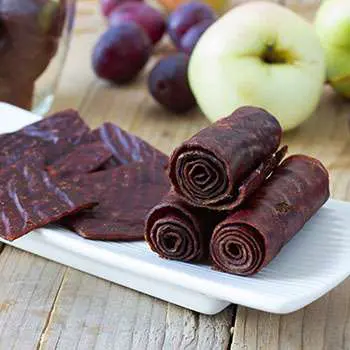
Almost every American is familiar with the concept of ‘fruit leathers’. Easy to make, tasty to eat, and a great way of making your favorite fruits last for ages. You will need seasonal fruit such as apples, plums, apricots, peaches, strawberries, raspberries, mulberries, figs. Fruit should be fully ripe but not damaged.
Method:
- Wash and clean fruit, remove stones or pips.
- Cut fruit into small pieces.
- Place in a heavy-duty pan, cook on very low heat, stirring with a wooden spoon to prevent sticking until fruit is soft and the mixture quite thick.
- Next: Beat to a smooth paste with a wooden spoon.
- Once the mixture is cool, spread it, as thinly as possible, on baking trays covered with greaseproof paper.
- Stand the trays outside in direct sunlight, cover with fine mosquito netting to keep insects away – do not allow the netting to come into contact with the fruit paste.
- Check drying/dehydrating progress at the end of the first day and, if a leathery sheet has formed, carefully turn it over, change the greaseproof paper if necessary, bring inside the house for the night and continue for a second, maybe even a third day.
The fruit leather is ready once it has attained the consistency of…. well…. leather!
After that, store by rolling up the sheets, including the greaseproof paper, in airtight containers in a cool, dark place. Alternatively, cut the leathers into squares/strips, separating each one with greaseproof paper to prevent them from sticking together, and store. Fruit leathers can be stored for up to 1 year.
Use:
Deliciously nutritious just as they are or for filling biscuits/cakes.
2. Vegetable Soup Base
This traditional, low-cost, Turkish way of quickly providing nutritious bowls of soup to sometimes huge families, should be a classic stand-by.
Ingredients: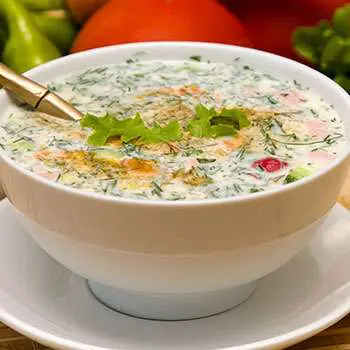
You will need a mixture of potatoes, onions, leeks, turnips, rutabaga, cauliflower or broccoli florets, capsicum peppers, aubergines, pumpkin, squash, carrots, beetroot, parsnips and mushrooms.
Method:
- Wash, clean, and cut the vegetables into small cubes.
- Spread out on drying trays or a clean bedsheet laid in direct sunlight.
- Move the cubes around from time to time.
- Bring inside for the night and put back out in direct sunlight each day until completely dry.
After that, you can store it in sterile Mason jars in a cool, dark place and it remains good for 2 – 3 years.
Use:
This is the perfect soup mix, so easy to make as you just need to add some to water and simmer.
3. Savory Stew
Native Americans and Indigenous Canadian peoples have long known how to feed groups of people with healthy and nourishing natural foods. Their stews are legendary.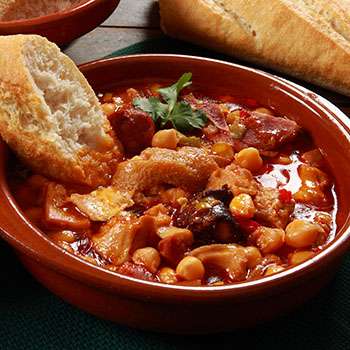
Ingredients:
You will need a selection of greens and other preferred vegetables, a mixture of fresh beans, pumpkins or squash, wild game, chicken, meat, or fish.
Method:
- Wash and clean all ingredients, chop/slice everything into a large, heavy-based, pan. Cover everything with water, add salt and pepper, bring to a boil and simmer until everything is thoroughly cooked. Serve alone or accompanied by flatbread.
- You can top the stew up by adding more ingredients when it gets a bit low and, as stews tend to improve on being reheated, the delicious result can be enjoyed for at least a week in the cold months of winter.
This savory stew is excellent for canning. When canned, it stores for as long as 1 – 2 years.
4. Bean Stew
Another Native American favorite, one which was a regular on the dinner table during the ‘Great Depression, provides a cheap and flavorsome meal with very little effort involved.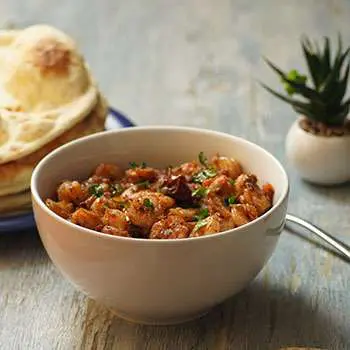
Ingredients:
- 500g fresh or dried haricot beans. (If using dried beans, soak them overnight to speed up cooking time).
- 500g fatty mutton or beef on the bone washed and cut into chunks.
- 1 large onion, peeled, sliced, and chopped.
- A little cooking oil.
- 1 kg chopped tomatoes
- Half liter tomato juice
- 1 tbs brown sugar.
- 2 tbs molasses or treacle.
- 1 tbs mustard powder or freshly crushed white mustard seeds.
- Salt and pepper to taste.
Method:
Put a little cooking oil in a large, heavy-based pan. Add the onion and meat and brown them on low heat. Add the beans and enough water to cover them. Bring to a boil and simmer until beans are almost cooked. Put in all the other ingredients, cover, and simmer, stirring often, until the sauce is thick and the meat is done.
Serve:
Serve alone, with rice, pasta, or spaghetti. Also, this bean stew can be canned and then kept for 1 – 2 years.
5. Bone Soup
In high demand right across Central Asia, bone soup is a nourishing staple that may be served at breakfast, lunch, or for dinner.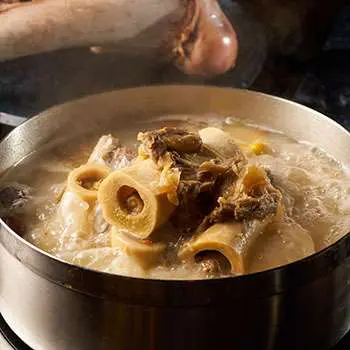
Ingredients:
You will need some meaty bones of cows, sheep, goats, or deer, or a mixture of them all. If the bones are large, they should be split to expose the marrow. You can add salt and pepper to personal taste.
Method:
Place the bones and seasoning in a large pan. Cover with water. Bring to the boil and let simmer for at least 3 – 4 hours. Scoop off any scum that has formed on the surface of the soup. This soup can be topped up with more water, re-boiled, and served up over a few days, the flavor improving all the time.
Use:
You can serve the soup hot in bowls or in cups or pour over plain rice for a very satisfying meal. This soup can also be canned and then kept for as long as 1 year.
6. Simple Pumpkin
Vitamin-rich pumpkins – so easy to grow and to store – are another Central Asian favorite with which to make a cheap and cheerful meal.
Ingredients:
You will need 1 pumpkin, of any variety, weighing 3 – 8 kgs, some melted butter and salt, and pepper.
Method:
You need a pan, with a tightly fitting lid, large enough to put the full pumpkin in with enough additional space to cover the pumpkin with water. Bring to the boil, simmer until the pumpkin is cooked.
Use:
When cooked, cut the pumpkin into large wedges, sprinkle with salt and pepper, and pour on a good helping of melted butter. Eat immediately. Whole pumpkins can be stored, in a cool dark place, for about 1 year.
7. Spiced Eggs
This is a tasty way of preserving eggs when your chickens are laying too many for you to use and was a popular recipe during World War 1.
Ingredients:
- 3 tsp black peppercorns
- 3 tsp all spice
- 3 tsp crushed ginger
- 3 x 2-inch strips cinnamon bark
- Dried red chilies to taste
- 1 tsp salt
- 1 ltr apple cider vinegar
- 2 dozen eggs or enough to fill a large Mason jar
Method:
- Make spiced vinegar by putting vinegar and all spices in a pan (not aluminum). Bring to boil, simmer 15 mins.
Hard boil the eggs, remove shells. - Pack egg into sterilized Mason jar/jars, add vinegar and spices, completely submerging the eggs.
- Then, seal.
Keep for at least 2 weeks, to allow the flavor to develop, before using. Spiced eggs can be kept for up to 2 years.
Use:
With salads, French fried or dip in beaten egg, coat with breadcrumbs and deep fry.
8. Spiced Tangerines
A popular recipe in Iran and also in Southern Turkey, this is a mouthwatering way of enjoying tangerines all year round.
Ingredients:
- Enough small tangerines to fill a large Mason jar.
- Half tsp bicarbonate of soda.
- 3tsp all spice
- 6 x 1-inch pieces cinnamon bark
- 2-inch piece root ginger cut into matchsticks
- Dried red chilies to taste
- 450g brown sugar
- 1 ltr wine vinegar
Method:
Wash tangerines, stab each one a few times with a fork. Put in a heavy-based pan, just cover with water, add the bicarb. Bring to boil, simmer 15 mins. Add vinegar and spices, simmer another 15 mins. Finally, add sugar, simmer for about 20 mins until liquid is syrupy.
Carefully lift tangerines out and pack in sterilized Mason jar/jars, pour the syrup over them, submerging the fruit.
Seal immediately and store. This is a way of keeping tangerines for as long as 3 years.
Use:
Serve with fish, chicken, pork, venison, or even with ice cream.
9. Courgette Relish
This traditional British recipe is just one way of preserving your courgettes and the result is delicious.
Ingredients: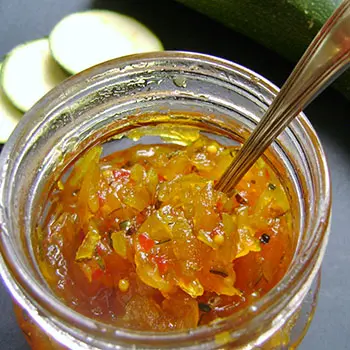
- 2 kgs courgettes
- 2 large onions
- Half cup salt.
- 2 cups vinegar
- Half cup plain flour
- 1tsp turmeric
- 1 tbsp black mustard seeds
- 3 tsp strong mustard powder
- 1 cup sugar
Method:
- Wash courgettes and slice thinly.
- Peel and thinly slice onions.
- Put alternate layers of courgettes and onions, heavily sprinkling each layer with salt, in a large bowl.
- Cover and leave for 1 hour.
- Then drain off the liquid and wrap in a towel to remove excess moisture.
- Put the vinegar and spices in a large pan, place on low heat.
- When it reaches the simmering point add the sugar and then thicken to a sauce using the flour.
- Add the cucumber and onion slices, mixing well, cook, on low heat for another 10 minutes stirring constantly to prevent sticking.
- Bottle in sterilized jars.
Stored in a cool, dark place this tangy relish will last for up to 3 years.
You may also like:
Foods You Should Never Buy And Always Make At Home
10 Things Cowboys Carried with Them in the Wild West to Survive (Video)
What Happens If You Ash Your Garden
How To Attract Toads and Frogs to Your Garden (And Why You Should Do It)

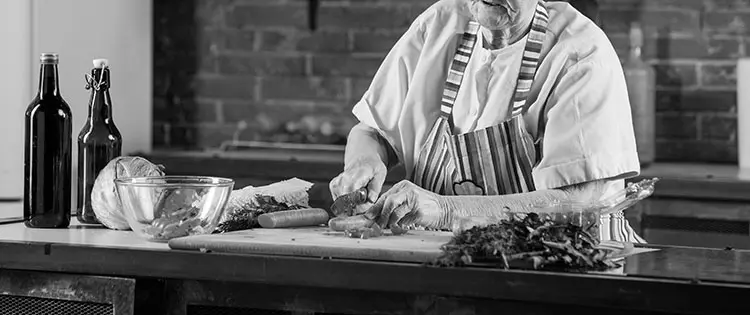













Can you use an alternative to sugar in the courgettes’ recipe?? I was wondering about stevia.
Of note, “courgettes” are also called zucchini. Just like “aubergine” are also called eggplant.